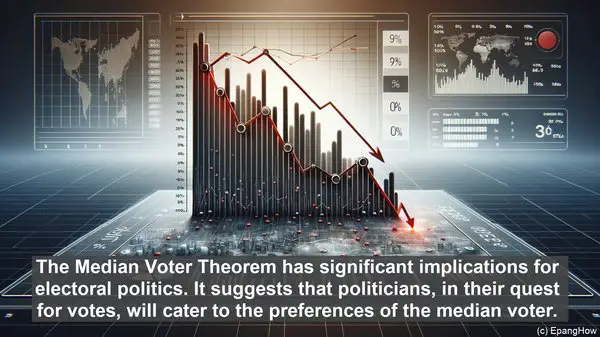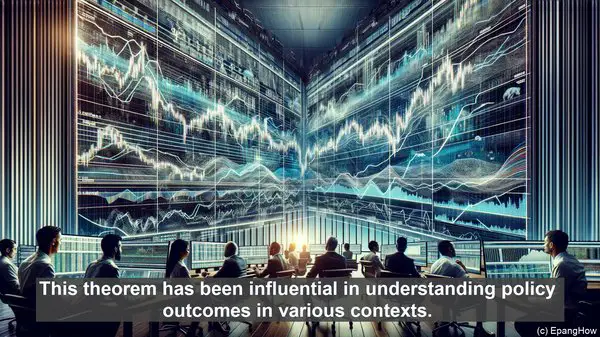Introduction: Unraveling the Theories
Greetings, audience! Today, we embark on a journey to understand the nuances of Median Voter Theorem and Public Choice Theory. While both concepts revolve around political decision-making, they approach the subject from distinct angles. Let’s begin!

The Median Voter Theorem: A Balancing Act
The Median Voter Theorem posits that in a majority voting system, the policy outcome will align with the preference of the median voter. This theorem assumes a single-dimensional policy space and rational, self-interested voters. The idea is that politicians, driven by the desire to secure votes, will position themselves close to the median voter’s preference. Consequently, the median voter’s choice becomes the equilibrium point. This theorem has been influential in understanding policy outcomes in various contexts.

Public Choice Theory: Unveiling the Dynamics
In contrast, Public Choice Theory delves into the intricacies of decision-making within the political realm. It recognizes that individuals, including politicians, act based on their self-interest. The theory incorporates economic principles, such as cost-benefit analysis, to explain political behavior. Public Choice Theory also acknowledges the role of interest groups, bureaucratic agencies, and other stakeholders in shaping policy outcomes. It provides a comprehensive framework to analyze the complexities of political decision-making.
Divergent Assumptions: A Key Distinction
One of the fundamental differences between the two theories lies in their assumptions. While the Median Voter Theorem assumes a single-dimensional policy space, Public Choice Theory acknowledges the multidimensionality of policy issues. Additionally, Public Choice Theory recognizes that individuals, including voters, may not always act rationally or possess complete information. These contrasting assumptions shape the methodologies and predictions of the two theories.
Implications: From Elections to Policy Outcomes
The Median Voter Theorem has significant implications for electoral politics. It suggests that politicians, in their quest for votes, will cater to the preferences of the median voter. This can lead to policy convergence, as parties strive to capture the center. On the other hand, Public Choice Theory highlights the potential for policy capture by interest groups or bureaucratic agencies. It emphasizes the need for institutional checks and balances to mitigate such capture and ensure the public interest is served.
